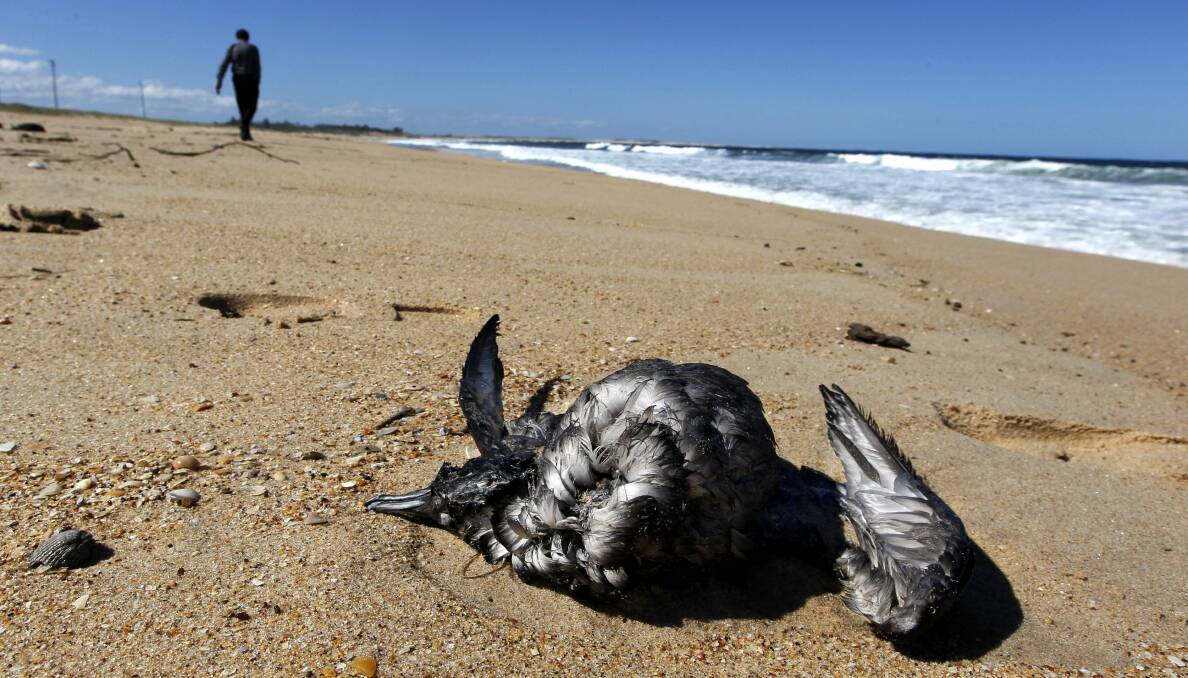
Short-tailed shearwaters have been washing up dead and dying on the Illawarra's beaches and at least one scientist blames a "marine heatwave" as a likely cause, saying this should sound an alarm about the condition of the ocean.
Subscribe now for unlimited access.
or signup to continue reading
Shearwaters (commonly called mutton birds) return to south-eastern Australia in spring after spending the winter months in the northern hemisphere, a journey of 10,000 kilometres or more that can take them 13 to 18 days to complete.
It is an energy-intensive endeavour for a relatively small bird, as is the breeding process that comes afterwards.
Marine scientist Dr Jennifer Lavers from Charles Sturt University said a "marine heatwave" taking place off the east coast of Australia had likely affected the availability of the birds' prey, likening it to "a forest fire, but in the ocean".
Oceanographers estimate a 400-kilometre wide eddy swirling off the coast holds 30 per cent more heat than normal for this part of the ocean, and temperatures deep underwater are three degrees higher than usual.
Penny Beaver, an Australia Seabird and Turtle Rescue (ASTR) volunteer and seabird ecologist, said all the dead and dying shearwaters the ASTR had picked up had "very poor body condition".
Ms Beaver said it was likely the birds' prey resources were not as abundant, either before leaving, upon arrival or both.
Shearwaters preferred to eat krill to build up their fat stores, she said, and their prey could shift with warming waters, but noted that currents were always moving and changing.
She said the eddy off the coast could have played a role, but there was no evidence to support whether the issue affecting the birds' body condition lay at the end of the migration, prior to their departure, or both.
Conditions in the northern hemisphere might have had an impact.
Dr Lavers said there had been a number of marine heatwaves in the north Pacific Ocean where they spent the winter, a period that was crucial for restoring their energy reserves.
"That combination of... poor environmental conditions should happen very infrequently," she said.
She said this should sound the alarm about what was happening in the environment, describing seabirds as a sentinel animal warning of impending danger.
Historical records did not show mass deaths of these birds happened often, Dr Lavers said, and this was a modern phenomenon.
"This speaks to the deterioration of conditions in the ocean," she said, explaining that oceans absorbed most of the heat that stemmed from rising carbon dioxide levels in the atmosphere.
Ms Beaver said no one was tracking the number of dead and dying birds and she was not certain what was happening now was an unusual event, but it was probably much smaller than a mass death that occurred in 2013 (it was found these birds had eaten pumice and plastic because they were starving).
Dr Lavers dismissed theories that shearwaters were dying because of adverse weather like storms, describing them as myths.
These were birds that lived in some of the windiest places on earth, she said, and had evolved to use such conditions to their advantage.
"Emaciation is a slow process - this takes place over weeks, many, many weeks, not days," Dr Lavers said.
Reading this on mobile web? Download our news app. It's faster, easier to read and we'll send you alerts for breaking news as it happens. Download in the Apple Store or Google Play.


